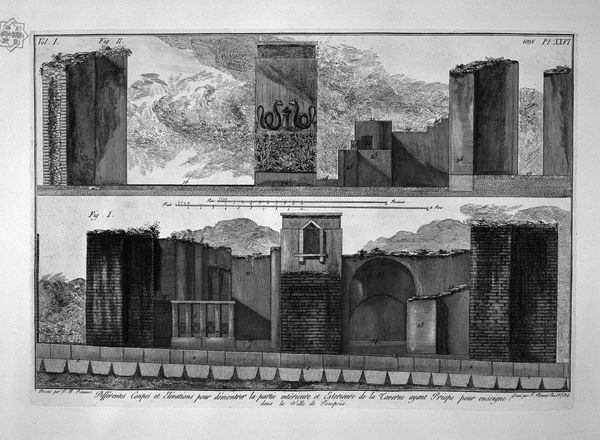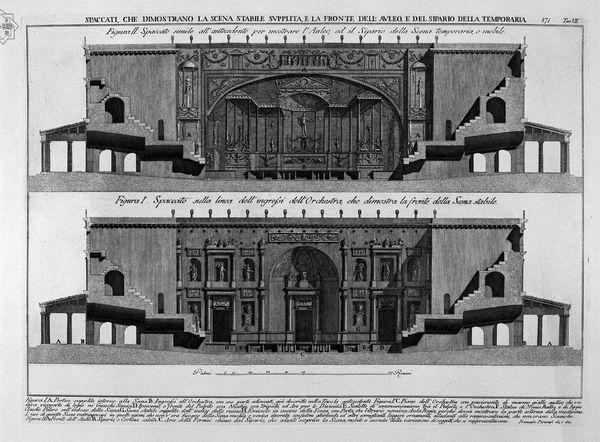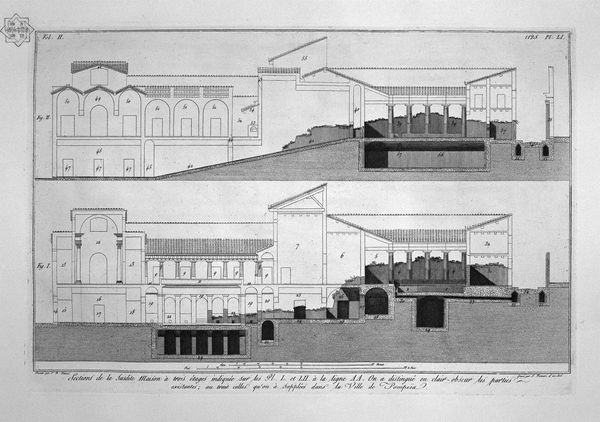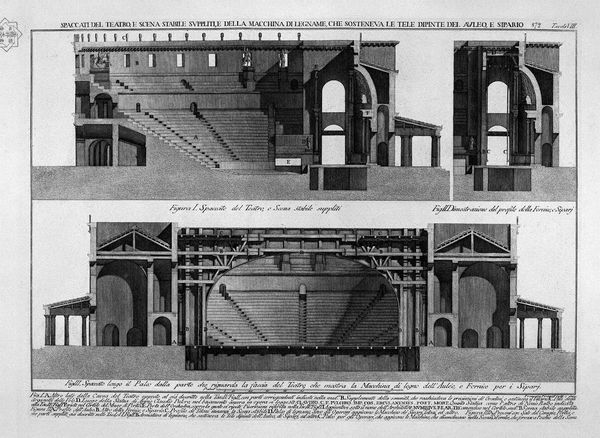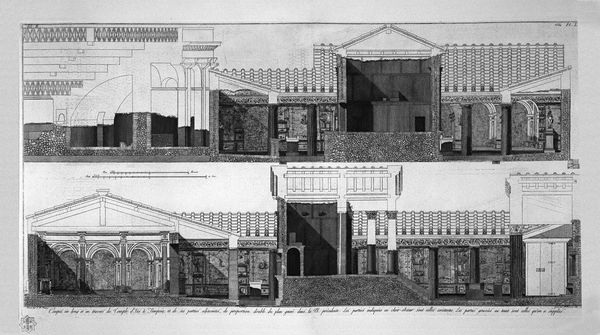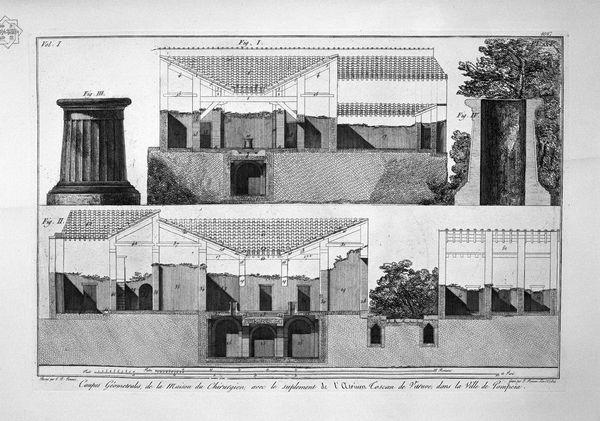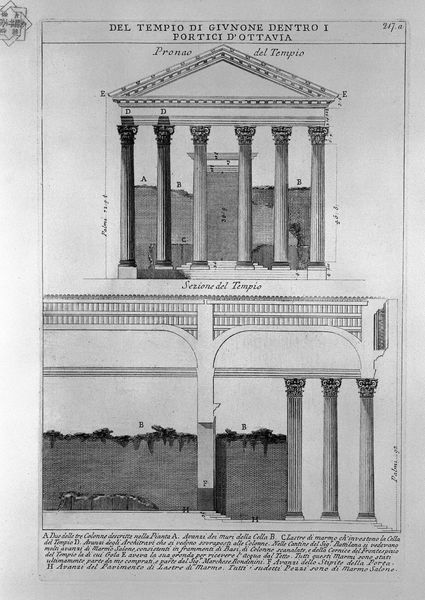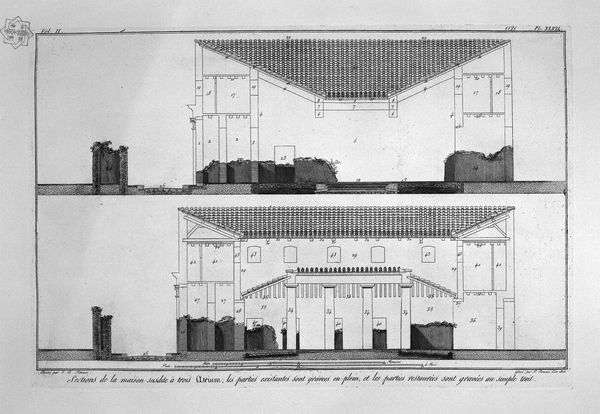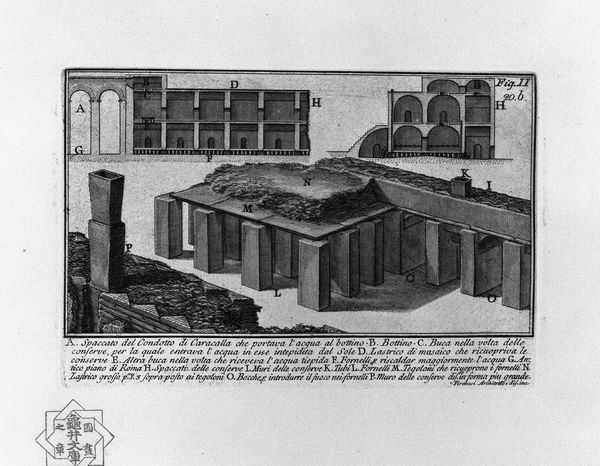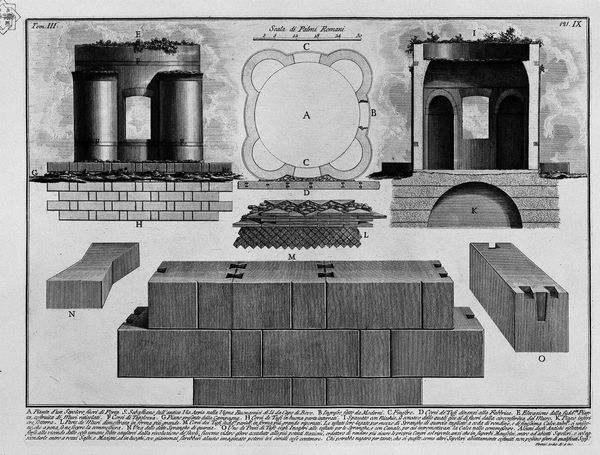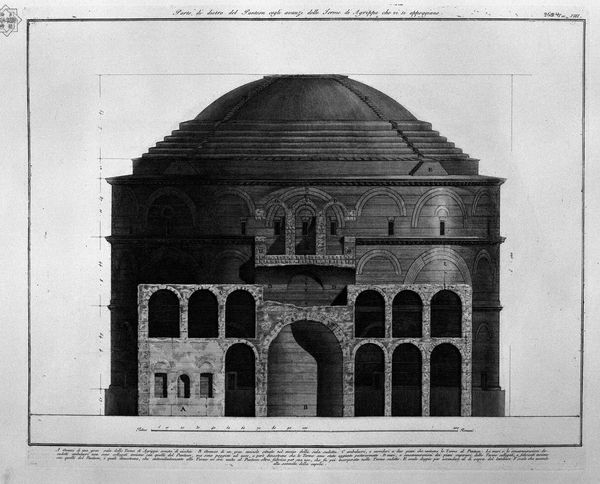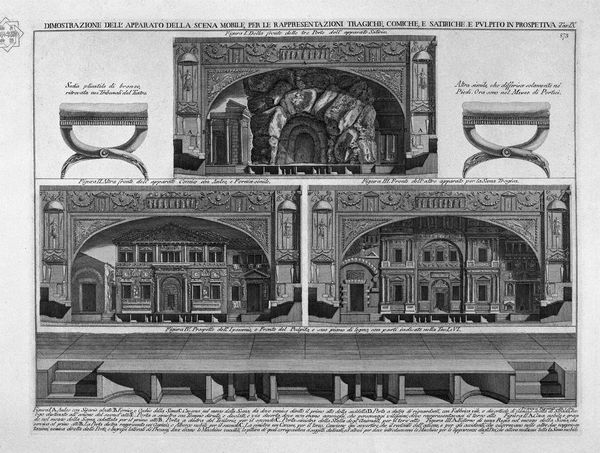
Split, showing the scene in front of building, and stairs, which ascend to the second precision
0:00
0:00
drawing, print, engraving, architecture
#
drawing
# print
#
old engraving style
#
perspective
#
text
#
romanesque
#
column
#
script
#
line
#
cityscape
#
engraving
#
architecture
#
building
Copyright: Public domain
Curator: Looking at this engraving by Giovanni Battista Piranesi, titled "Split, showing the scene in front of building, and stairs, which ascend to the second precision," I’m immediately struck by the detail. It’s incredibly intricate; all those lines give the impression of complex architecture. What's your initial reaction? Editor: It feels rather cold, clinical, even. Like an architectural diagram stripped bare, divorced from the human experience it represents. But the perspective shifts also intrigue me—the multiple viewpoints force us to deconstruct the space. Curator: Indeed. Piranesi’s etchings often play with perspective, but there's more to this image. Piranesi created many such detailed depictions of ancient Roman architecture. They weren't always strictly accurate records. His prints participated in a booming market for views of Rome among European travelers. The grand tour! This one presents cutaway views. Editor: So, beyond simple documentation, they served to perpetuate a specific vision of Rome—monumental, awe-inspiring, steeped in a powerful imperial past for an elite consumer, very interesting, in thinking about class. The script around the artwork is beautiful. Are we meant to think about the artist and how he perceived the culture when this was constructed? Curator: That’s key. And the emphasis on perspective relates to the Enlightenment era fascination with rational systems of thought. Yet, simultaneously, Piranesi infuses a dramatic, theatrical flair, perhaps commenting on this approach. You can also make connections with contemporary stage design. It certainly appears like it could represent a set for a show. Editor: That duality is potent, playing with rational depiction while simultaneously subverting it. And who is this for? It feels very exclusive. Do we have many accounts or responses to this artist? This prompts critical questions about art's role in constructing and reinforcing cultural narratives, especially those surrounding power and class during that period. Curator: Precisely. These works became status symbols, visual souvenirs cementing their owners' cultured status. Looking at the script in between each of the segments in the image provides insight on their intended placement. It reads a key element of functionality from the viewer. This image reminds us of how the legacy of artistic production intertwines with patronage and cultural capital. Editor: Exactly, it makes me rethink how history continues to reverberate within present structures. We need more opportunities to allow artistic creations like these to ignite meaningful dialogues and change.
Comments
No comments
Be the first to comment and join the conversation on the ultimate creative platform.
